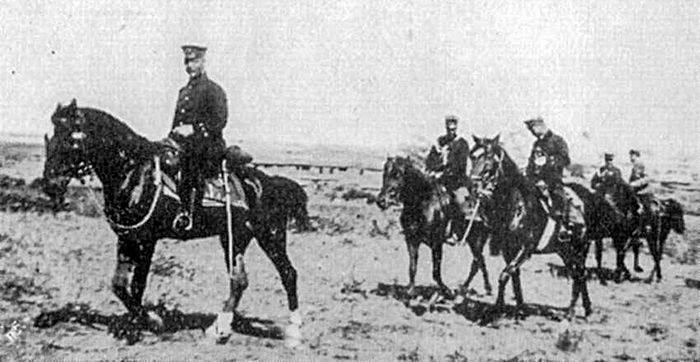
Yoshifuru Akiyama (left) and a cavalry-trooper brigade
| Search in a pageSearch The
table of contents of the Type 32 Guntō |



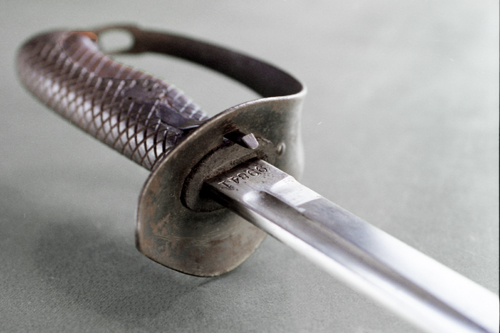


 |
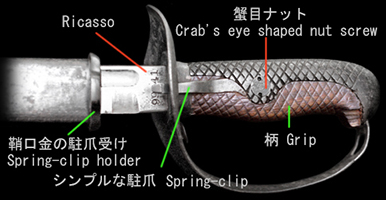 |
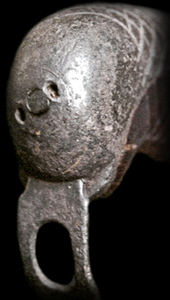 (Kanime-nat) Crab's eye shaped nut screw |
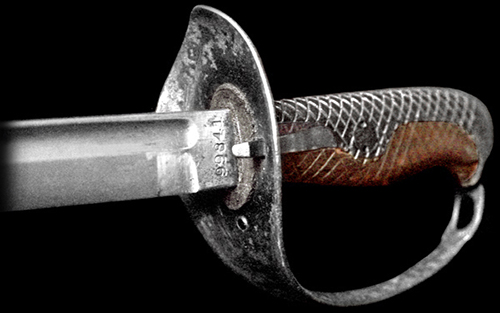 Blade No.99841,Black rust is attached to the root of the blade. Leather washer. The remaining black colors of the blade side of the guard are strong. |
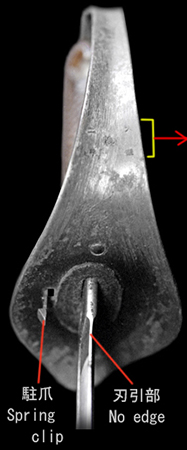 |
 |
There are four characters of "2", "Dai", "Hei", and "discernment are impossible" centering on the stamp of the Tokyo Artillery Arsenal. Two upper characters are the Taishō-era 2 works. Two lower characters are considered to be an inspector's name. |
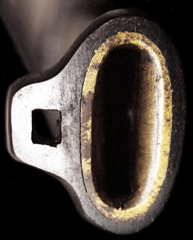 |
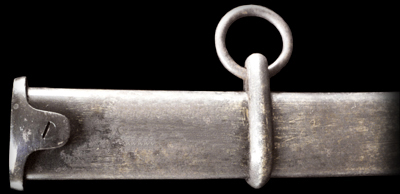 |
| As for the metal fittings which stop the spring clip of the throat, a taper is attached from the field of the throat with the curve of the Tsuba. It is a hole of this bolt receptacle that it looks white horizontally before the center of the shadow of a nest Saya. | The throat and fixed
minus bolt: The throat and its circumference are visible to the remaining colors of black paint. |
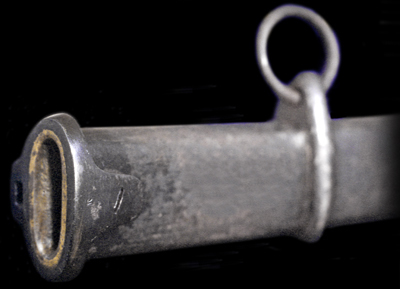
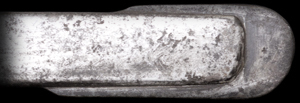 |
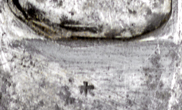 |
| Although the throat side is
visible to a scar of black paint, the
chape(Ishizuki) side is visible also like a scar of chromium plating |
Marks which deleted the serial
number of the shoe-shaped chape with the
file: The same serial № as a blade must have been stamped. It is a
stamp of "Ho" to the bottom of it. This is an inspection mark of the Tokyo Artillery Arsenal. |

| ← Type 95 Table of contents |
Type 98 Type"Kō" & details(2) → |